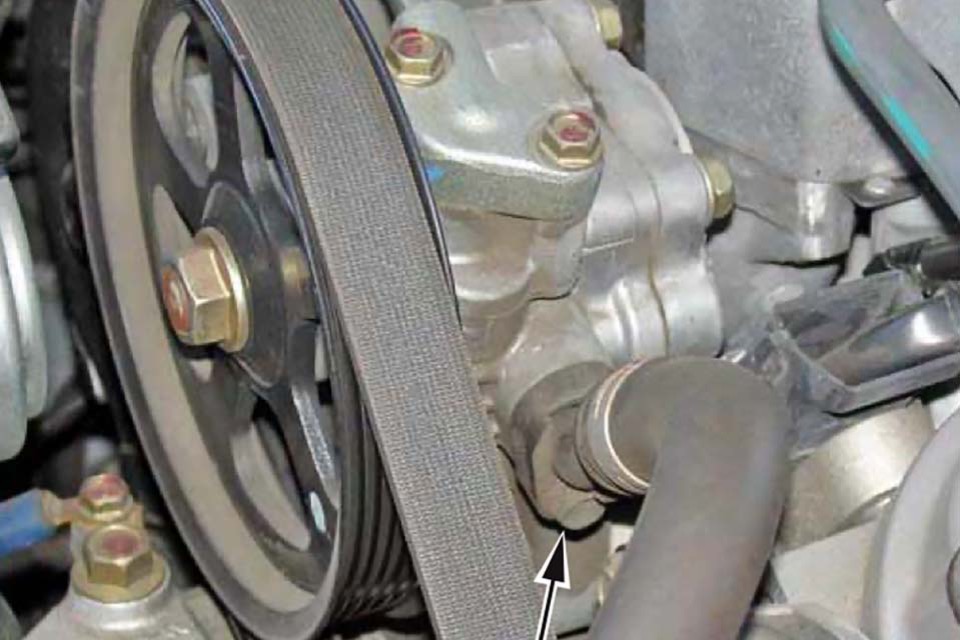Two Simple Reasons Why Certain Honda Generations Have Whiny Power Steering Motors
- Air getting into the power steering system causes a loud whine when turning the wheel.
- The problem is worse during a cold start-up according to service bulletin #07-086
- Honda has offered free repairs to some owners, while everyone else is left to find a DIY solution.

I don't want to overhype power steering but ... it's pretty cool. Without it you're going to have one hell of a time turning your steering wheel, especially at lower speeds. But it's a whole hydraulic[1] system with motors, belts, and pressurized fluid so it's bound to have problems.
One common Honda power steering complaint is a loud whining or groaning noise while turning the steering wheel in certain generations of vehicles.
What Causes All That Whining? ∞
The noise is likely the result of air getting into the power steering system. While there are multiple ways this could happen[2] one of the most common reasons for these particular systems is worn out o-rings.
The power steering system has a high pressure and low pressure hose that connect to the motor, and each of those hoses contain an o-ring to keep the seal nice and tight.
But these o-rings harden and wear out over time, breaking the seal and allowing air to enter the system.
What's the problem with a little air? ∞
Air creates cavitation in the power steering fluid. All that fancy word essentially means is air pockets and bubbles forming where they shouldn't.
The process interrupts the hydraulics from working properly and the motor doesn't necessarily get all the power steering fluid it needs to run efficiently.
Maybe that's why it whines like a toddler that just lost their iPad on a long road trip.
Service bulletin released for Accord owners ∞
Honda talked about the power steering moaning or whining, especially during a cold start-up, in service bulletin #07-086.
The automaker says the probable cause of the noise is [a]ir is entering the power steering pump through the inlet joint O-ring
and that this causes bubbles to form in the power steering fluid, leading to reduced pump performance.
See, it's those damn bubbles.
The bulletin allowed owners of the 2003-2008 and certain 2009 Accords to have this work done under warranty.
DIY the Fix For Under 10 Bucks? ∞
So what about everyone else who isn't covered by that service bulletin? There's good news.
- O-rings and power steering fluid are dirt cheap.
- With a little know-how and some elbow grease you can probably even replace them yourself.
YouTube user dial2fast who has a great video showing the steps needed to make the repair. He paid $8.32 for the parts including one black O-ring (part #91370-SV4-000) on the system's high pressure hose, and one orange O-ring (part #91345-RDA-A01) on the low pressure hose, and one bottle of genuine Honda power steering fluid.
A couple important caveats here:
- If you're not at all comfortable with stuff like this, leave it to the professionals.
- I've listed the part numbers for the o-rings but it's important to double-check the part numbers for your specific vehicle.
- You only want to use Honda genie parts here, especially power steering fluid. Don't go looking for a better deal on Amazon. It's eight to ten bucks, do it right.
With all that said, this repair is easy enough for even a kid to do. For real.
Generations Where This Problem Has Been Reported
This problem has popped up in the following Honda generations.
Most years within a generation share the same parts and manufacturing process. You can also expect them to share the same problems. So while it may not be a problem in every year yet, it's worth looking out for.
7th Generation Accord
- Years
- 2003–2007
- Reliability
- 58th out of 58
- PainRank™
- 84.85
- Complaints
- 3106
3rd Generation Odyssey
- Years
- 2005–2010
- Reliability
- 48th out of 58
- PainRank™
- 31.32
- Complaints
- 1261
1st Generation Pilot
- Years
- 2003–2008
- Reliability
- 45th out of 58
- PainRank™
- 22.88
- Complaints
- 663